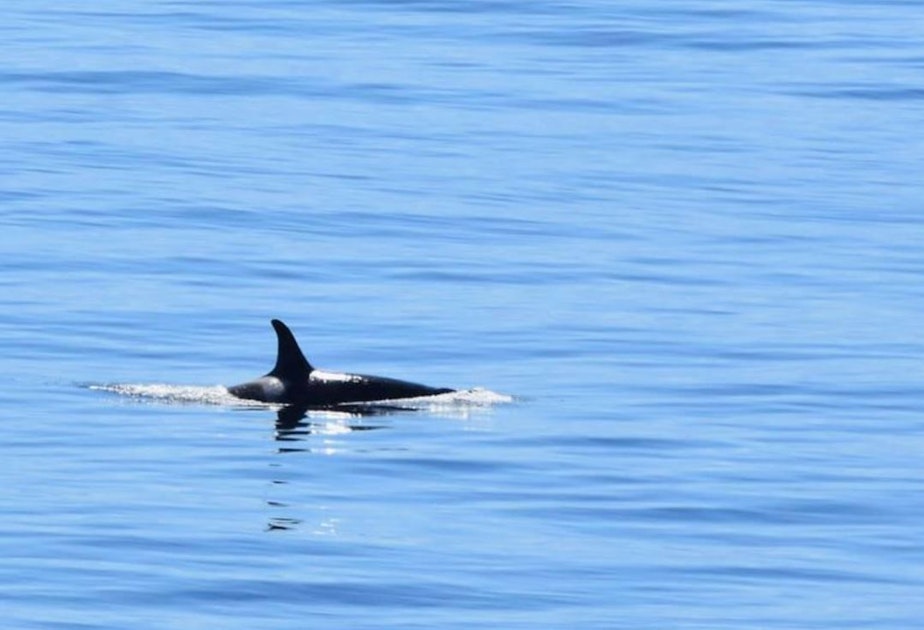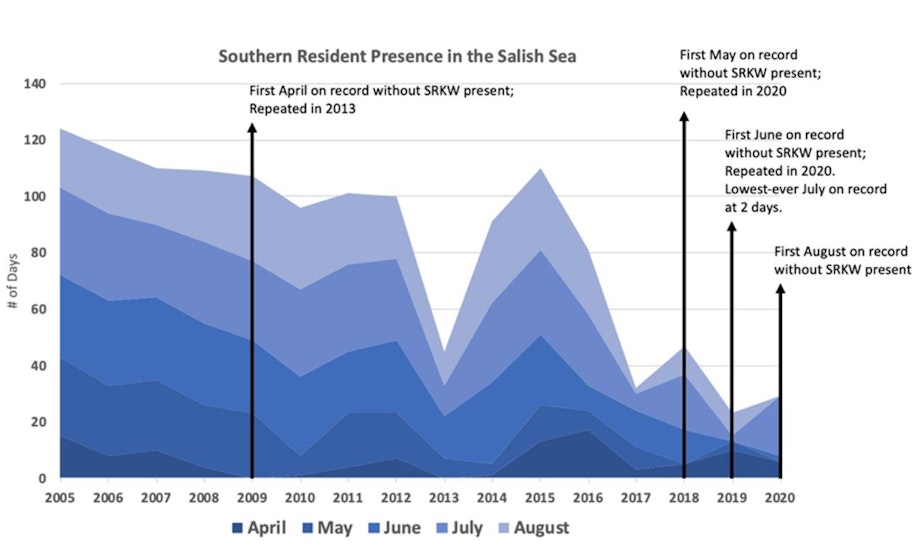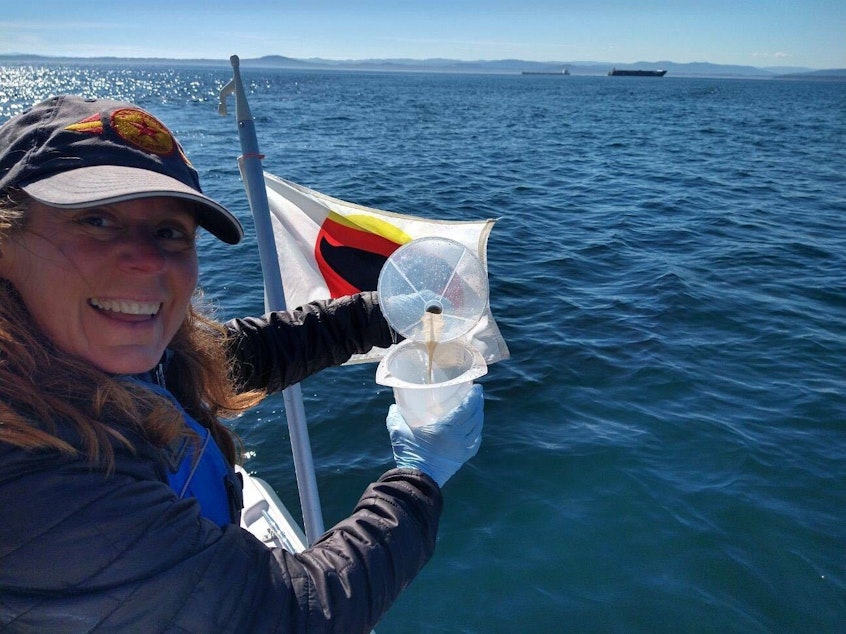Rare treat: endangered orcas return to Salish Sea in search of scarce salmon

After six weeks away from its usual summer splashing grounds, the J pod of endangered orcas returned en masse to the west side of San Juan Island Tuesday morning.
While the endangered orcas’ other pods, K and L, were still roaming the open ocean, researchers spotted all 22 members of J pod returning to the inland waters that the southern resident killer whales are named for, south of Vancouver Island.
“We had hoped to see new babies, but we didn't,” Ken Balcomb with the Center for Whale Research said.
Researchers had spotted at least one pregnant orca in each of the three pods in July.
August ended without a single sighting of the endangered orcas on their home turf in the Salish Sea, the inland waters shared by Washington and British Columbia.
Balcomb has been monitoring the southern residents’ populations since 1976.
Sponsored
“We have not had an August without southern residents in that whole time except for this one,” he said.
“No fish, no blackfish,” Balcomb said, using a nickname for the black-and-white mammals. “It's been a pretty poor salmon year.”
Southern resident orcas feed primarily on Chinook salmon. The more common orcas known as transients feed on other marine mammals.
The transients have been spotted frequently throughout the Puget Sound region this year.
Balcomb said the remaining 72 southern residents have spent much of the summer along the outer coast of Vancouver Island, where they have been foraging for salmon migrating south from Alaskan waters to spawning grounds in the Columbia and Snake river basins.
Sponsored
Balcomb said a Canadian researcher on Monday saw members of K and L pods far offshore in the Pacific, in an area used by the U.S. Navy for training exercises 15 miles west of the Makah Reservation on the Olympic Peninsula.
More local appearances by the southern residents have been rare for much of the year.
With dwindling numbers of Chinook salmon returning to Canada’s Fraser River, just north of the border, and the rivers of Puget Sound, the fish-eating orcas have had little reason to swim here.
“In Puget Sound, all the runs are endangered,” Balcomb said. “Fraser's now a collapse.”
“We had no whales in the month of May,” University of Washington Center for Conservation Biology orca researcher Deborah Giles said. “Only one day in the month of June, where only a portion of L pod came in, and they stayed for less than one day.”
Sponsored

According to observations tracked by the nonprofit Orca Network, K pod and L pod have each spent just four days in the Salish Sea since February.
Since May 1, J pod has been observed on 19 days in the same inland waters, mostly during a two-week stretch starting the Fourth of July.
Giles said she repeatedly watched and tried to stop pleasure boaters off San Juan Island zooming up to the whales that holiday weekend as she was conducting research from her small boat.
Sponsored
With the busy Labor Day weekend approaching, orca researchers and activists hope to avoid a repeat of that maritime madhouse.
Boating in the San Juans has increased in popularity this summer, with many other recreational activities shut down or risky during the Covid-19 pandemic and a closed border preventing travel to Canadian waters.

Giles said, even on the first Tuesday in September, a lot of private boaters were behaving poorly around the newly returned, strictly protected orcas.
“We did actually have to flag down a few clueless private boaters,” she said.
Sponsored
State law mandates boats slow down to seven knots and stay at least 300 yards away from the endangered orcas.
Researchers hope to see more of the wide-ranging orcas this month.
“September remains the only month that, up to this point, they've been present at near-historic numbers,” Monika Wieland Shields with the Orca Behavior Institute said in a Facebook post.
Balcomb said many fall runs of Chinook salmon are in better shape than salmon runs that return to their spawning grounds earlier in the year.




